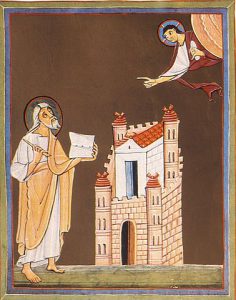 Overview of the Laodicea Letter
Overview of the Laodicea Letter
In terms of overall tone and themes, the Laodicea letter is similar to the Sardis letter, but it is even more negative. Jesus does not mention any strengths for the church, nor does he mention a faithful remnant, as he does with Sardis (3:4). In direct contrast to the poverty of Smyrna (2:9), the Laodicea church regards herself as richly blessed with material possessions (3:17). Jesus, however, assesses the entire church as “wretched, pitiful, poor, blind, and naked” (3:17). They may have worldly riches, but they are poor with respect to the true riches that Christ offers them if they will repent (3:18). Jesus’ assessment is consistent with the book of Revelation’s cautious attitude toward the wealth of this world. The False Prophet and the Harlot use wealth and greed to entice the unbelieving world to worship the Beast (13:17; 18:3). The Laodicea letter shows that wealth can be a stumbling block for the church as well. Having wealth can lead to unhealthy self-reliance and an impoverished spiritual life that does not produce treasures in heaven. Like the church at Ephesus, the entire church at Laodicea is called upon to repent or face rejection by Christ the judge.
Why Does Jesus Refer to Them as Lukewarm?
Before Jesus can offer to deliver his people, he must reveal to them their deep need for his deliverance. He begins by saying, “I know your works, that you are neither cold nor hot. How I wish that you were cold or hot. Consequently, because you are lukewarm and neither hot nor cold, I am about to vomit you out of my mouth” (Rev. 3:15-16). It is important to notice that being hot or cold are both acceptable. Being lukewarm is the only objectionable state. Therefore, it is not helpful to follow the example of interpreters who try to interpret what it means to be spiritually hot and what it means to be spiritually cold. Inevitably, they struggle to explain why Christ finds “spiritual coldness” to be an acceptable condition. The imagery here probably alludes to common dining imagery, which will appear again in Revelation 3:20. In the dining context, hot water and cold water are both desirable for consumption, but lukewarm water is much less desirable (Koester 343-4). Jesus’ threat to vomit them out of his mouth amounts to a threat to reject them entirely. It is akin to his threat to remove the lampstand of the Ephesian church. Why does Jesus find the Laodicean church to be comparable to a disgustingly lukewarm beverage? See my next post.
Sources:
1. Koester, Craig R. Revelation: A New Translation with Introduction and Commentary. Anchor Yale Bible. New Haven: Yale University Press, 2014. This is an excellent commentary on the book of Revelation and is especially helpful regarding the Laodicea letter. Koester shows that the hot and cold imagery of Rev. 3:15-16 has little to do with the water supply of Laodicea being lukewarm, Colossae’s being cold, and Hierapolis’s being hot. The evidence for this popular view is flimsy, especially since the hot springs of Hierapolis do not supply water suitable for drinking, but for bathing (337).
2. These paragraphs are slightly edited portions of my book: Paul Hoskins, The Book of Revelation: A Theological and Exegetical Commentary, pp. 112-14 (those pages provides further sources and footnotes that I have omitted above).

